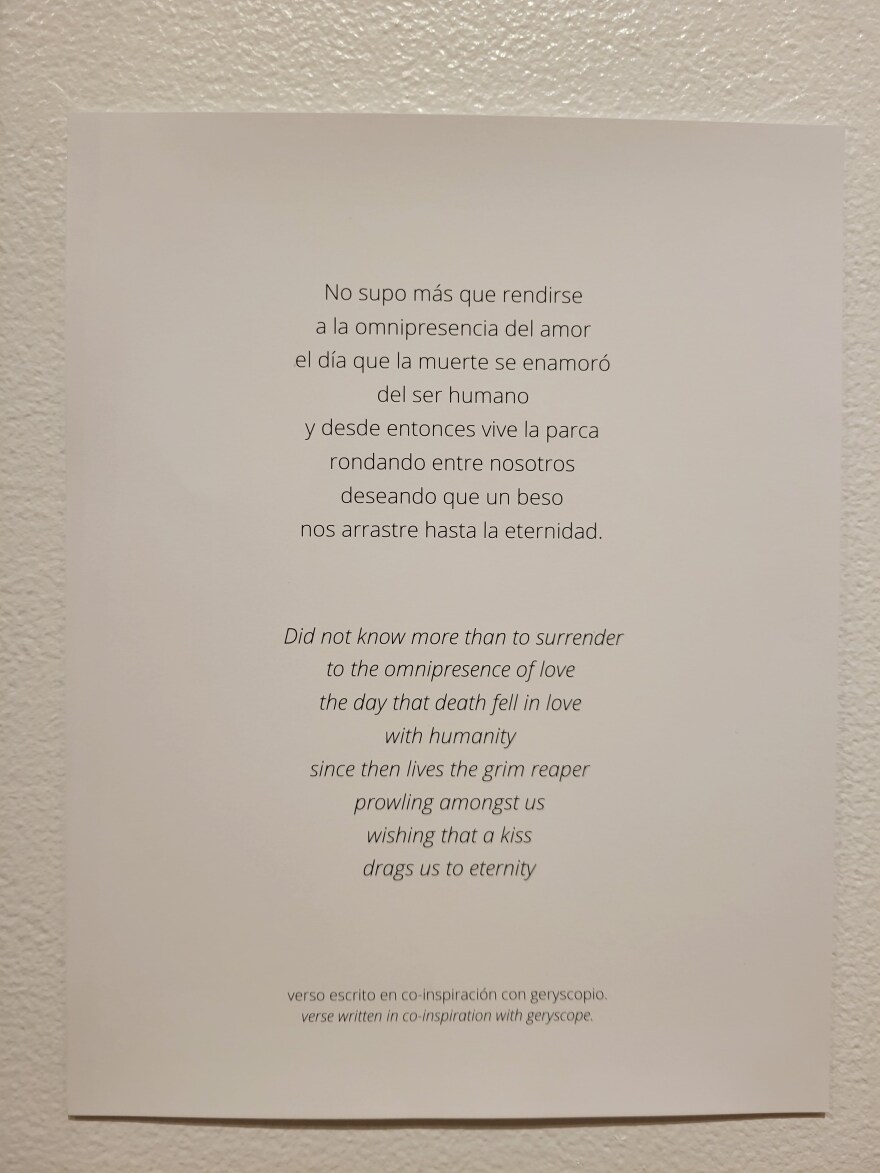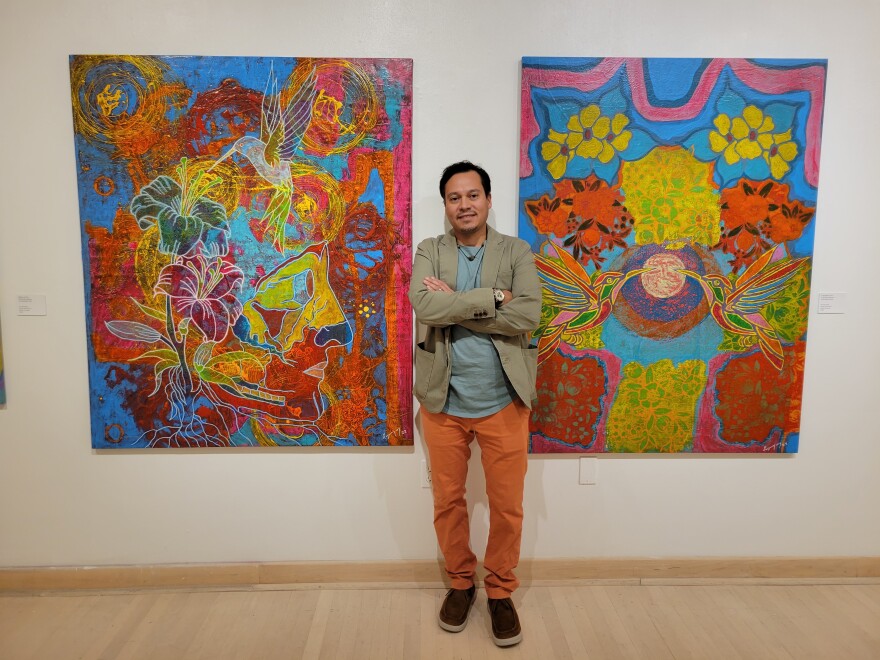Have you ever had a loved one struggle with memory loss? Guatemalan-American artist Richie Morales has, and it's influenced a new exhibit at Latino Arts in Milwaukee.
“Before this, I used to paint very political topics,” says Morales. “But my grandfather passed away because he got Alzheimers. So, that was something that impacted me very deeply. So, I got a little bit obsessed about the memory.”

Morales says his grandfather was a good storyteller, but as he wrestled with memory loss, he started mixing up his histories. He gives an example of eating with his grandfather. Food would take his grandfather back to the past.
“So, I noticed he was kind of mixing his memories and crossing the histories and that impacted me, like ‘oh my god!’” Morales started thinking about how much of our memories are really true and how we create our own memories based on subsequent moments in life.
His exhibit at Latino Arts, on view through October 7, 2022, looks at the effects of time on memory. The exhibit showcases around 20 paintings with bright, vibrant yellows, oranges, reds, blues and greens. Morales says his paintings reference indigenous colors and the culture of his country, Guatemala, but also reflect Latin America as well.

But it's the white outlining of recurring shapes in Morales' paintings, like hummingbirds and flowers, the human heart and sometimes heads and faces, that represent the original event that a memory is based on.
Here's how Morales does it: he works in layers, color stacked upon color. The colors represent one’s experiences through life, layer upon layer. Then Morales sands back down to the original canvas in the painting, representing the original event that a memory is based on.
By sanding the color away to reveal the white lines, Morales investigates how time (represented by color) wears away at or mutates the original events as we remember them.
“So once you get in your memories in the bottom, then you have this other question, how much is true? Isn't that memory, right? Or how this memory happy, it was impact for another situation?” asks Morales. “And then you have [the memory] and you think, ‘oh, this is the way I remember,’ but is it really true or is like, it had been a little distortion, because other events around?”

Morales is a self-taught painter. He grew up in Jocotenango, Guatemala, which is a small town outside Antigua, one of the first and main cities in Central America.
“The place where I grew up is full of artists and artisans,” says Morales. He was first introduced to painting when he worked for some artisans making ornaments from wood. He would paint the ornaments. “I was very interested in in the movement of ink and acrylic on superficials and the possibilities you can experiment through acrylic,” says Morales.
He marveled at how many possibilities you can have with texture while painting. “And then the accident of, you know, dropping some paint on the floor, and then it gets dry and then what happened,” he says. He says he tries to pay attention to how the painting develops in the moment, evolving with the painting, and learns conscientiously from his “mistakes.” Morales also took a couple of courses with some friends who are professional artists in Guatemala who showed him other techniques like how to prepare the canvas. Morales says he also reads and experiments a lot.

Morales says people can only heal what they're willing to see. So, he says art plays a large role in social justice or in explaining to people what it's like to witness a loved one lose their memory.
“We need to start to have real conversation with the people who think different[ly] than us,” says Morales. “Because otherwise, we will continue to polarize more and more and more. So, through art, we can open those conversation, which are kind of difficult, but at the same time are necessary, right?”
Morales says he wants to give or transmit an idea through his work, but he’s also open to the perspectives of those who come to view the art.







